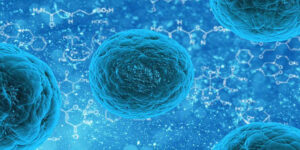Water pollution is a global problem, that has adverse effects, on human health. Water pollution caused by chemicals, organic and biological components, radioactive wastes, and other pollutants are hazardous to human health. Article below discusses Effects of Water Pollution on Human Health.
- Industrial effluents on water sources contain heavy metal elements such as nickels, cadmium, and lead. The pollution of water with nickel arises from industrial sources and agro-chemicals. Its toxicity is enhanced by the presence of other metals such as cobalt, copper, iron, and zinc in drinking water. Geologic deposits of cadmium can serve as sources of underground water and surface water especially when in contact with soft, acidic waters. Once ingested into the human body, cadmium causes the bone and renal disease, lung and renal dysfunction, and hypertension. Also, the kidney is considered to be a critical target organ in humans, when chronically exposed to cadmium by ingestion. Ingestion of these metals into the human body has caused renal diseases, hair loss, and cancer from carcinogenic components in the metals, and in extreme conditions kidney failures.
- Iron is used in the coatings of water transport pipes. Over time, the iron coatings deteriorate, introducing excess iron components in the water supply. Excess consumption of iron components into the human body causes liver cirrhosis. Moreover, iron components found in some pesticides and agrochemicals are deposited on the soil, where the rainwater washes the iron components into water sources. Groundwater contains soluble ferrous iron which can be transported to underground reservoirs and other sources of drinking water. Consumption of iron components can cause liver cirrhosis, hemochromatosis, stomach upsets and pain, nausea, and diarrhea.
- Radioactive wastes from nuclear plants pseudoscientifically disposed into water sources indulge chemical toxins into water sources. The radioactive toxicity in water sources causes cancer, hormone disruption, altered brain function, and inflammatory reactions when ingested in the human body. Besides, mining and refining of uranium and thorium also cause marine nuclear waste that results in the death of aquatic life. The consumption of these aquatic organisms affected by radioactive toxicity results in rectal cancer and kidney failure.
- Water pollution by increased thermal conditions in water sources results in high salt concentrations preventing direct use of drinking water. High salt concentration in water inhibits crop growth resulting in low crop yields and deficiency of nutrients causing malnutrition hence deficiency diseases. Moreover, high salt intake in the body results in high blood pressure which causes stroke, heart and kidney failure.
- Swimming and bathing in contaminated water cause rushes, pink eyes, and respiratory diseases. Small larvae called “Cercarias “found in contaminated water causes irritation and itchiness when they come into contact with the human skin and open parts of the body such as the eyes and ears. Also when this contaminated water is drunk it may result in throat infections and dysentery.
- Plastic and solid waste deposited on water sources induce micro-plastics in water sources. Ingestion of micro-plastics via drinking water results in oxidative stress and inflammatory reactions which are harmful to the body. Micro-plastics ingestion could further expose humans to chemicals linked to a variety of health problems including reproductive problems, intestinal failure and cancer, organ failures, and development delays in children.
- Bacterial germs induced into water sources via human fecal waste result in bacterial infections and water-borne diseases. When bacteria-infested water floods, it leads to the spread of waterborne diseases, such as cholera, typhoid, dysentery, and diarrhea. Contaminated water favors the spread of these diseases, via consumption and direct contact with bacteria-infested water, causing death and severe health conditions.
- Agro-chemical nutrients washed via surface runoff to water sources increase phosphate and nitrate concentration in water. The nitrate and phosphate concentration increase due to increased evaporation as a result of global warming. High nitrate and phosphate concentration in the human body cause methemoglobinemia (also known as the blue baby syndrome).
- Even though the main problem related to pharmaceutical in waste water effluents are connected to their Ecotoxicological properties, there is a growing concern about human health because of the presence of some of these compounds in drinking water derived from indirect or direct potable reuse. The chloride compounds used in the treatment of water; in high concentration, they are very harmful to human health because of the link to higher than normal acid in the blood. If the concentrations are not regulated, the chloride concentrations can lead to kidney stones with a hampered ability to recover if one suffers from kidney injuries.
- The relationship between water quality and the infant mortality rate is inversely proportional. As surface water quality deteriorates due to pollution, the infant mortality rate increases. The infant mortality rates increase due to illness caused by water pollution. Consumption of polluted water harms infant health.
In conclusion, water pollution has adverse effects on human health, both communicable and non-communicable, and in extreme cases it causes death. The above are just but a few effects of water pollution on human health, water pollution is inversely proportional to human health, and hence, for the prosperity of human health, water pollution should be controlled.
Image by Gerd Altmann from Pixabay






Pingback: 10 Common Diseases or Health Complications Related to Water Pollution - nPolluted
Pingback: 10 Health Consequences of Drinking Polluted Water - nPolluted